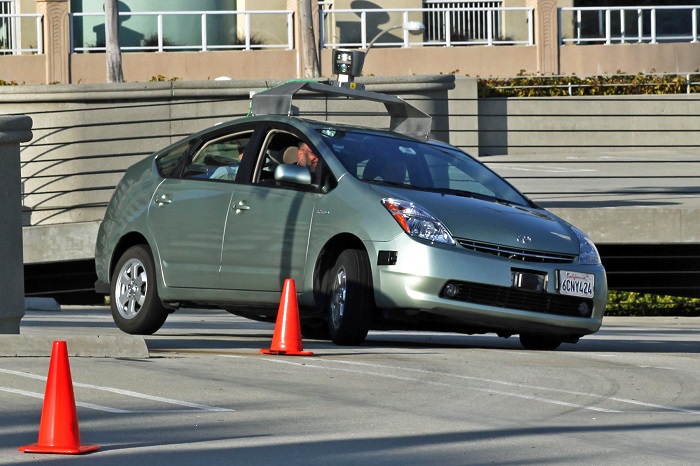For the first time, Google has published in-depth data pertaining to the performance of its autonomous driver program.
The move follows a demand for the releasing of this information by a California regulator, the state where the tech giant has conducted a majority of its tests.
Six other tech companies have revealed data about their own self-driving car research; these reports were published on each company’s own accord.

The 32-page Google report covers 15 months of tests on California’s public roadways. Among the more interesting details:
The company operated these vehicles in autonomous mode for 424,331 miles.
There were 272 cases in which the cars’ software detected a “failure” that caused it to notify the driver of said failure, and turn control of the car over to the driver.
69 additional events took place in which the driver had to take control of the car without being prompted because they perceived a safety threat.
Computer simulations were carried out after the fact and of the 69 potentially dangerous situations, 13 showed that there would have been a crash had the driver not taken control of the car.
Worth noting, of these 13 incidents, two would’ve resulted in the striking of a traffic cone; the remaining 11 would’ve been more serious.
The report adds:
“These events are rare and our engineers carefully study these simulated contacts and refine the software to ensure the self-driving car performs safely.
“We are generally driving more autonomous miles between these events.
“From April 2015 to November 2015, our cars self-drove more than 230,000 miles without a single such event.”
Of the other companies researching autonomous vehicle technology, the following was reported with the California Department of Motor Vehicles:
• Tesla drivers have never had to intervene
• Nissan drivers intervened 106 times in 1,485 miles of tests—the point of intervening was to avoid being rear-ended after braking too fast or crashing after braking too slowly
• Mercedes-Benz drivers intervened 1,051 times in 1,739 miles — 59 were unprompted, and generally because they had been “uncomfortable” with the software's behavior
• Delphi drivers intervened 405 times in 16,662 miles — 28 of these cases were precautionary, due to nearby pedestrians or cyclists, and 212 were due to difficulties making out road markings or traffic lights
• Volkswagen drivers intervened 260 times in 14,945 miles
• Bosch drivers intervened 625 times in 935 miles — the company reports all were “planned tests”
Worth noting is the recently published draft proposals by the California’s DMV; specifically, the Department’s requirement that fully licensed drivers be behind the wheels and pedals of all self-driving cars sold to the public. John Krafcik, president of Google’s self-driving car project, does not agree with this initiative, and believes that it will actually make a crash more likely.
At the Detroit Auto Show, Krafcik said that he believes the car “has to shoulder the whole burden.” That said, he did admit that Google’s plans would be influenced by car manufacturers. “No-one goes this alone,” he explained. “We are going to be partnering more and more and more.”
To learn more, read Google’s report in its entirety: Google Self-Driving Car Testing Report on Disengagements of Autonomous Mode, December 2015
Via BBC
Advertisement
Learn more about Electronic Products Magazine





